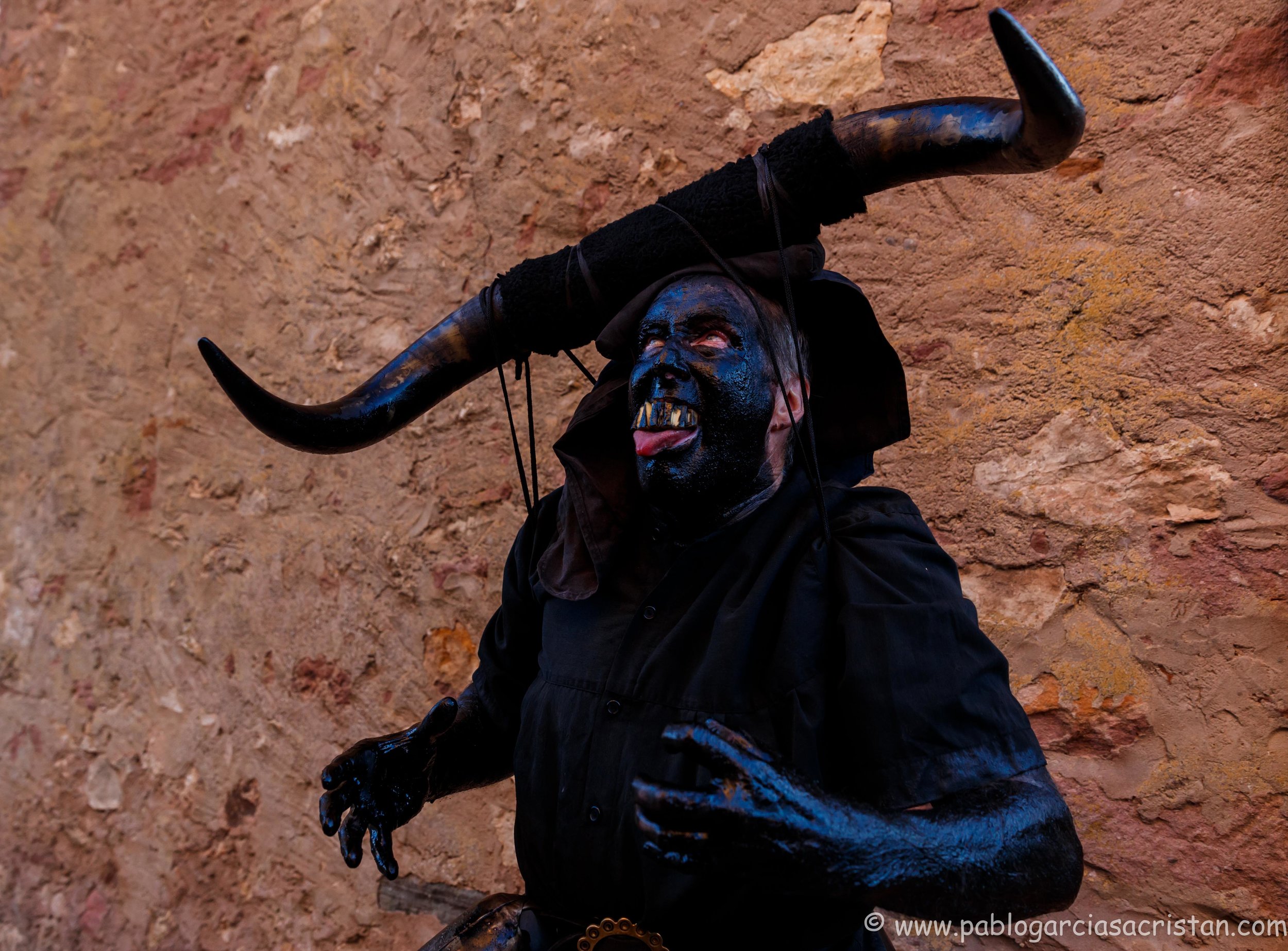
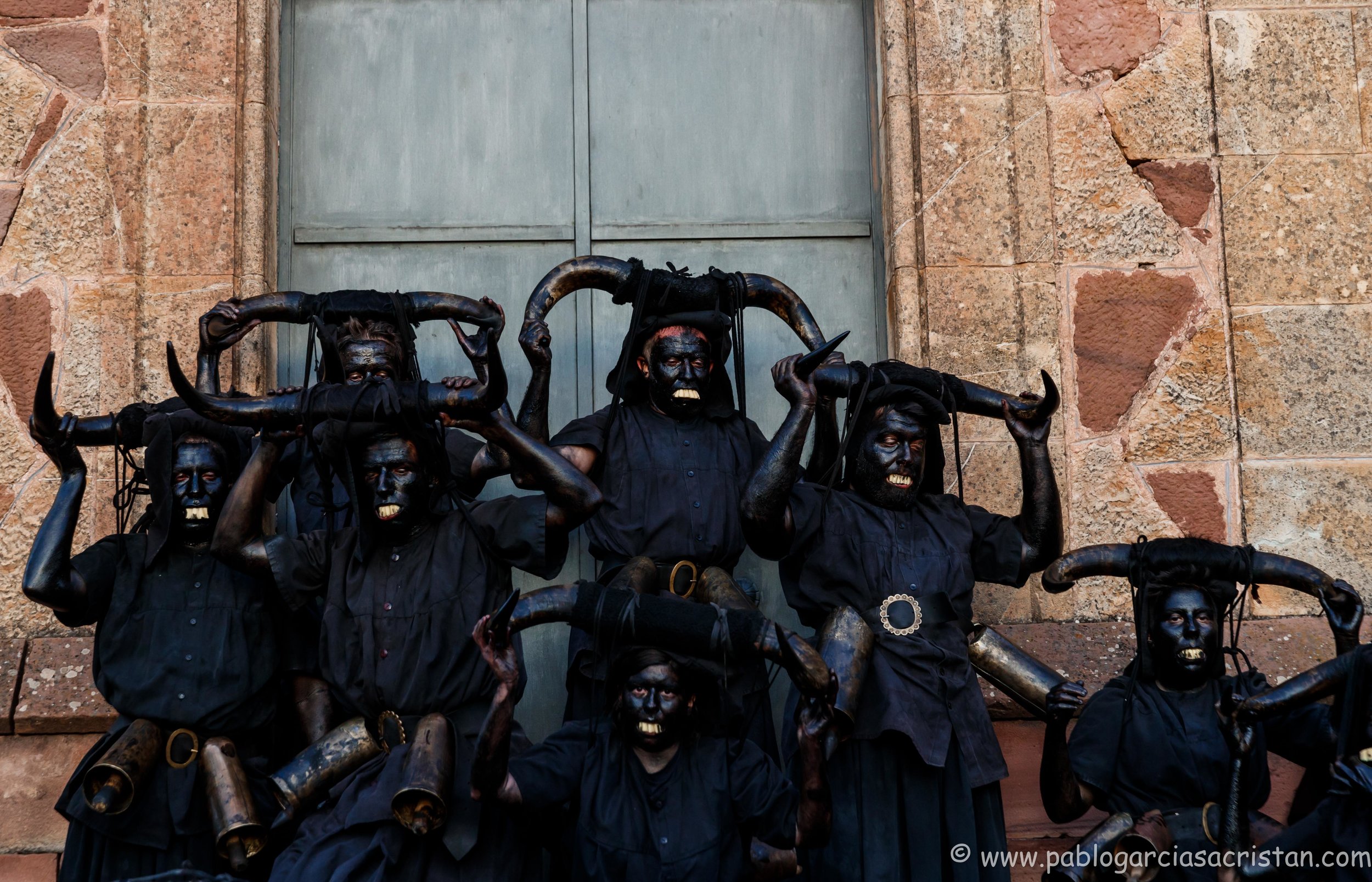
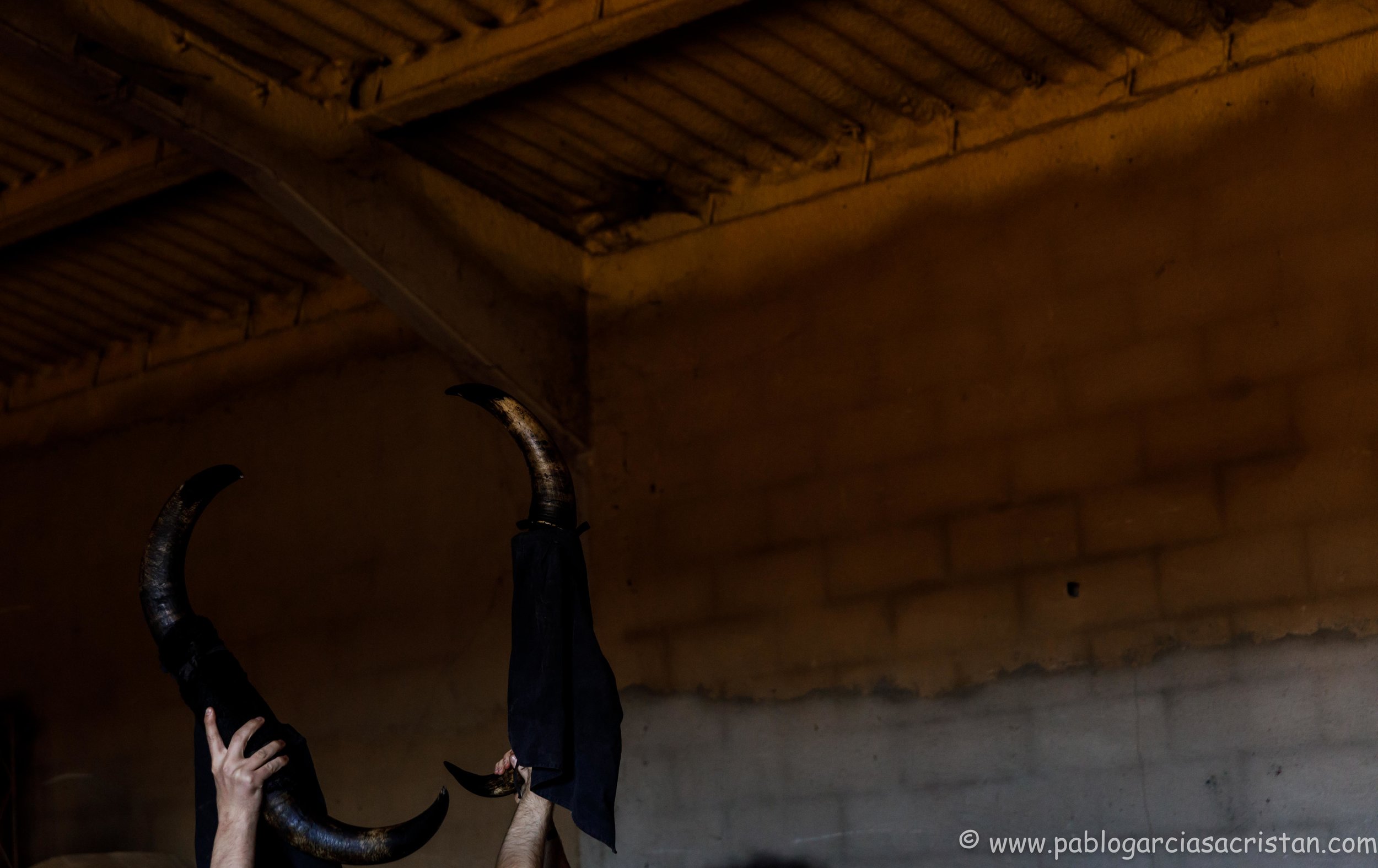
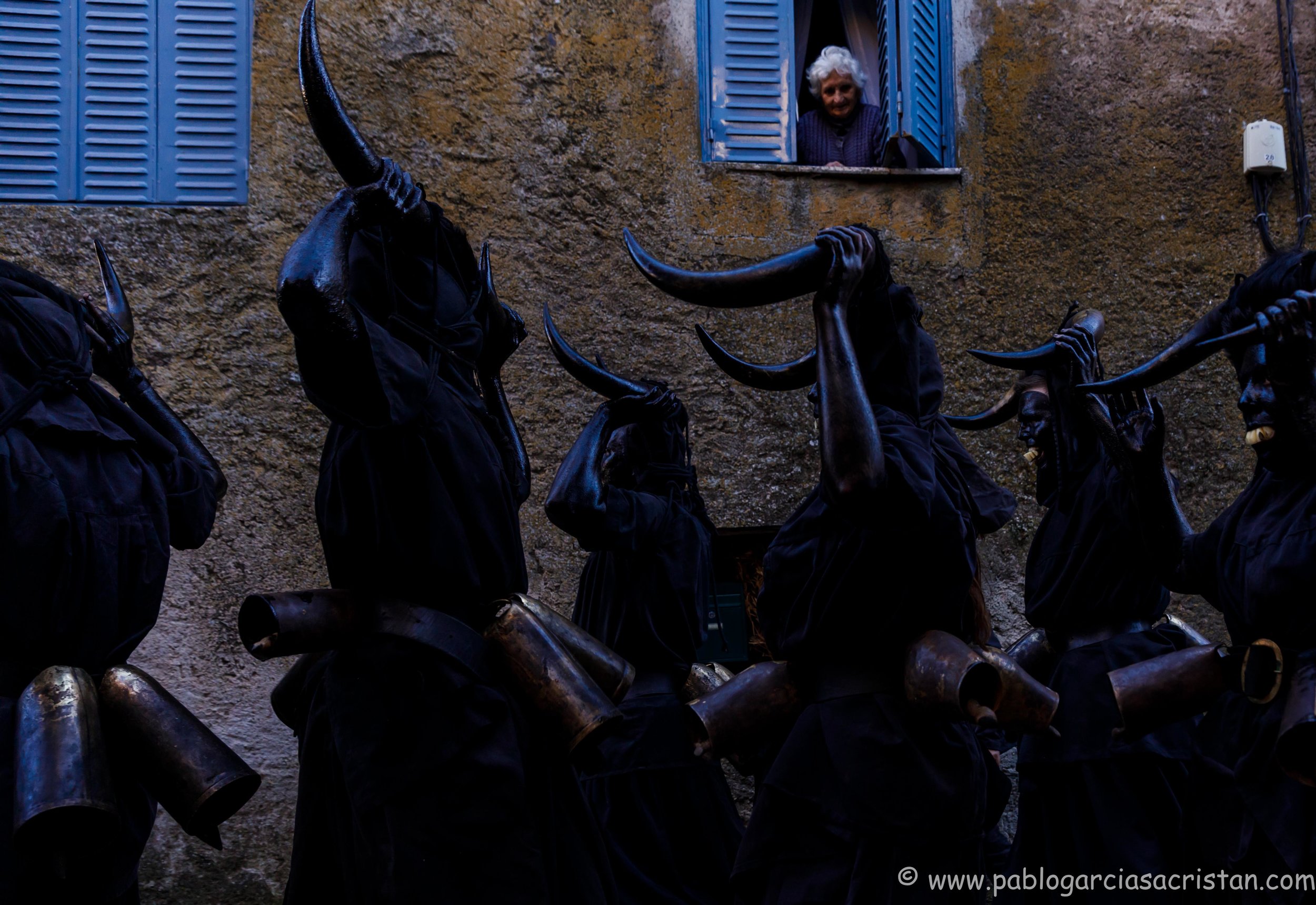
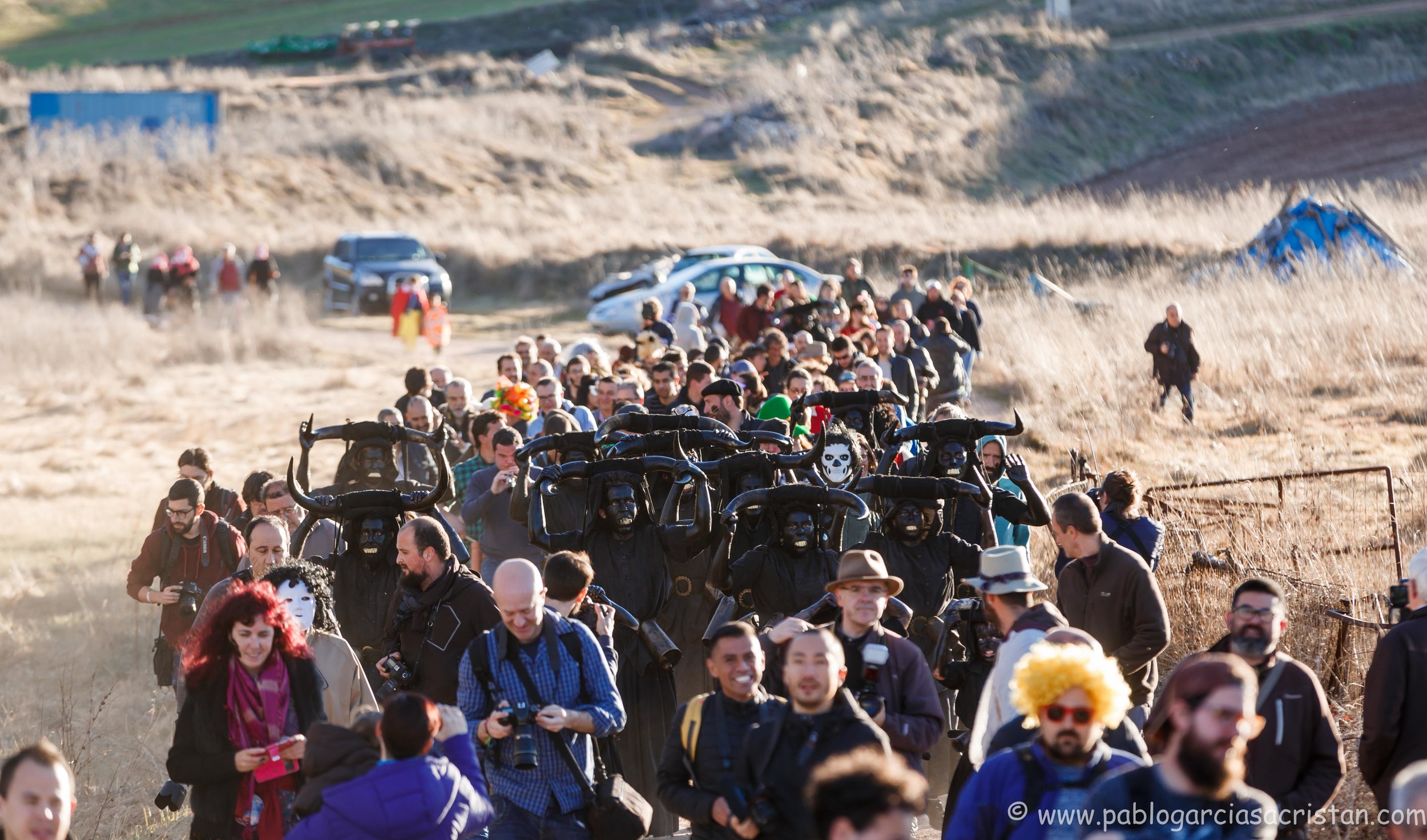
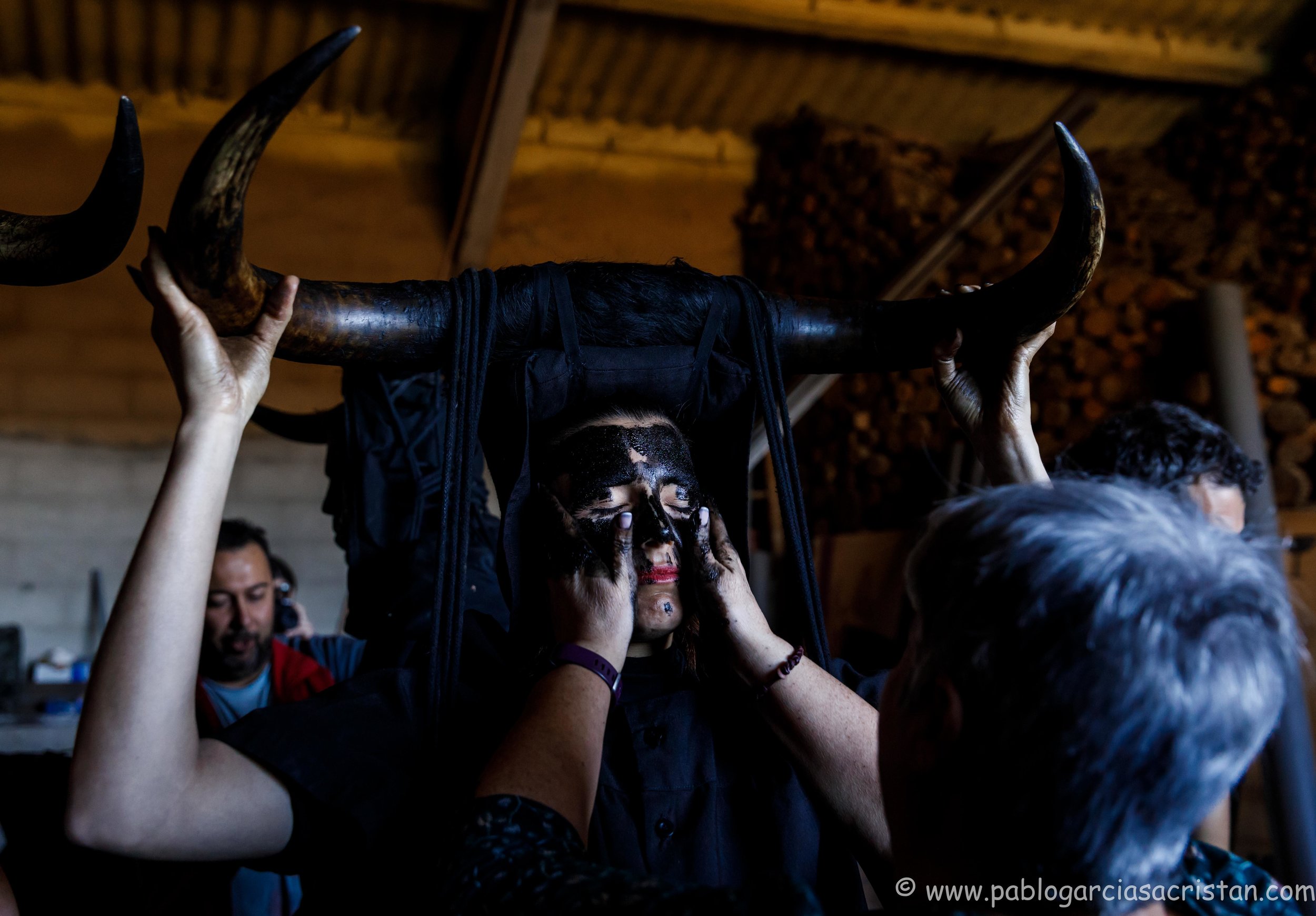
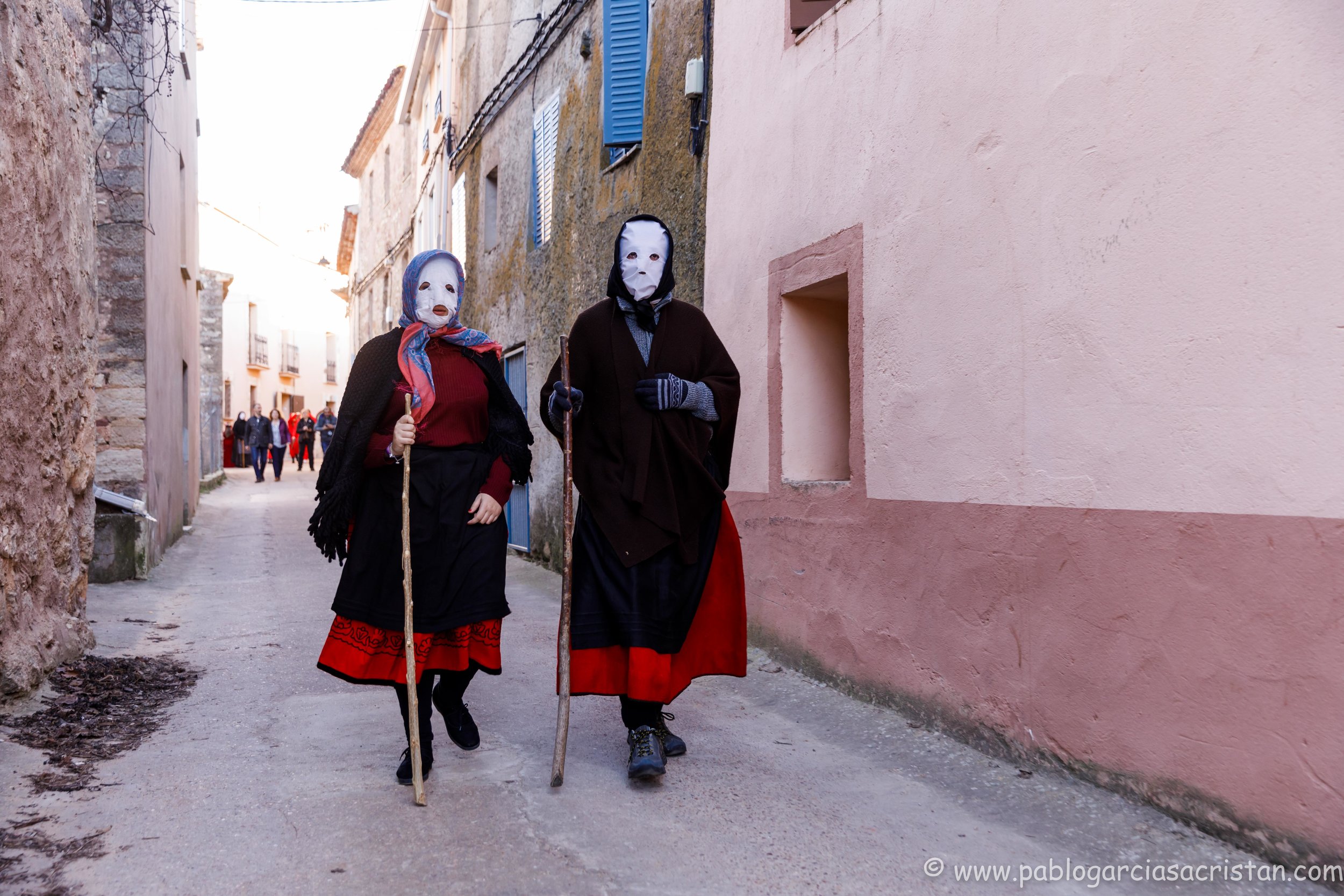
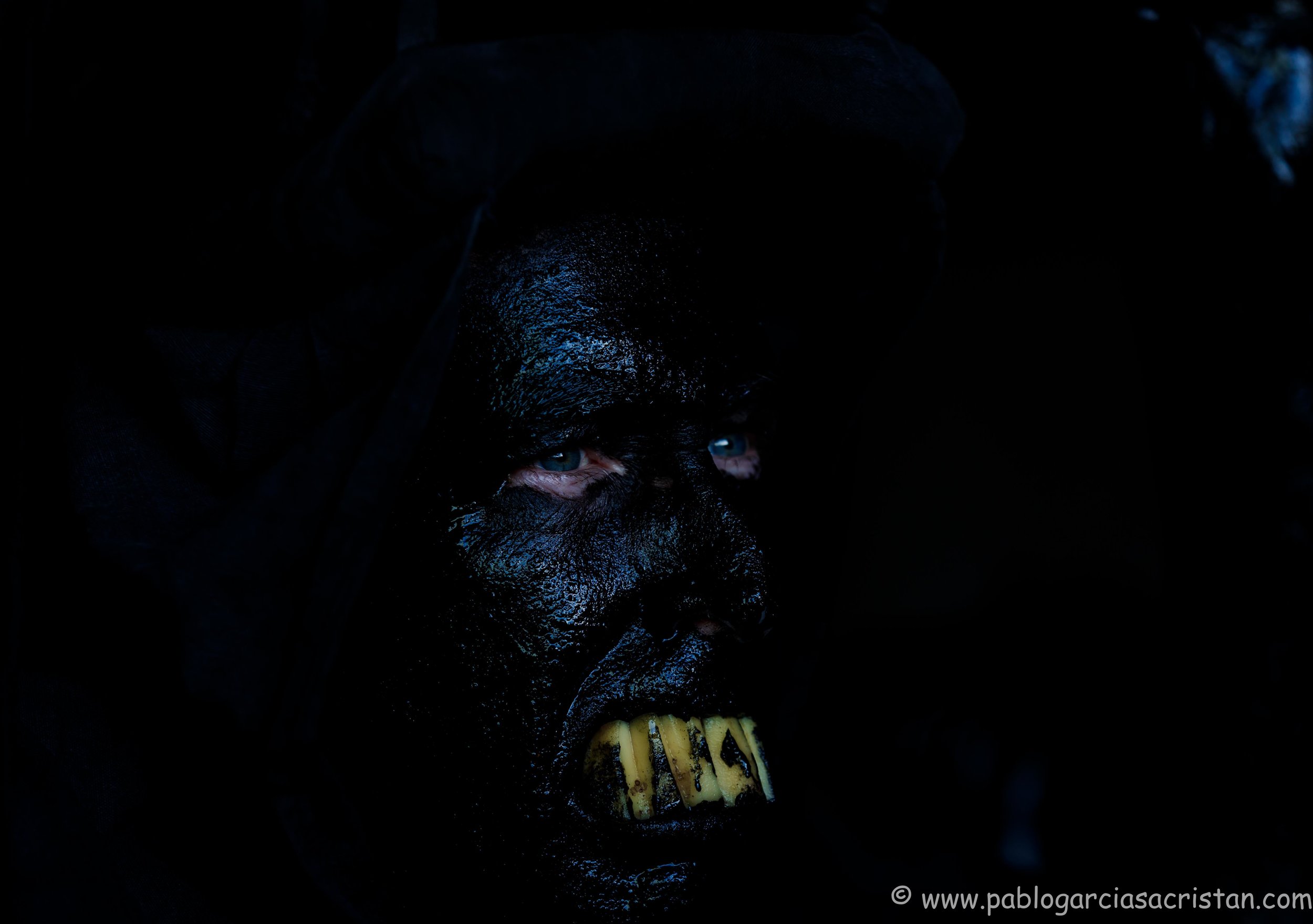
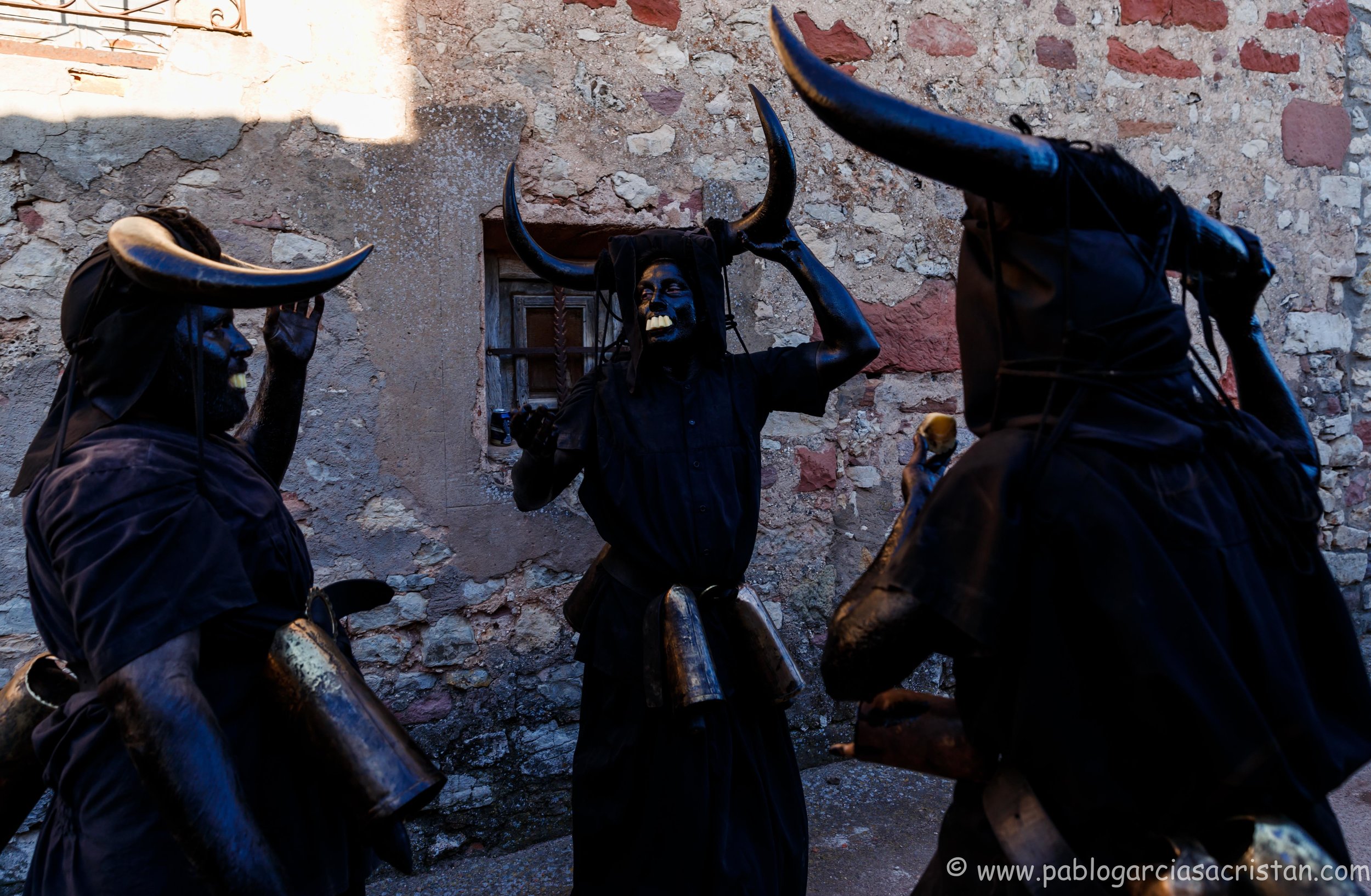
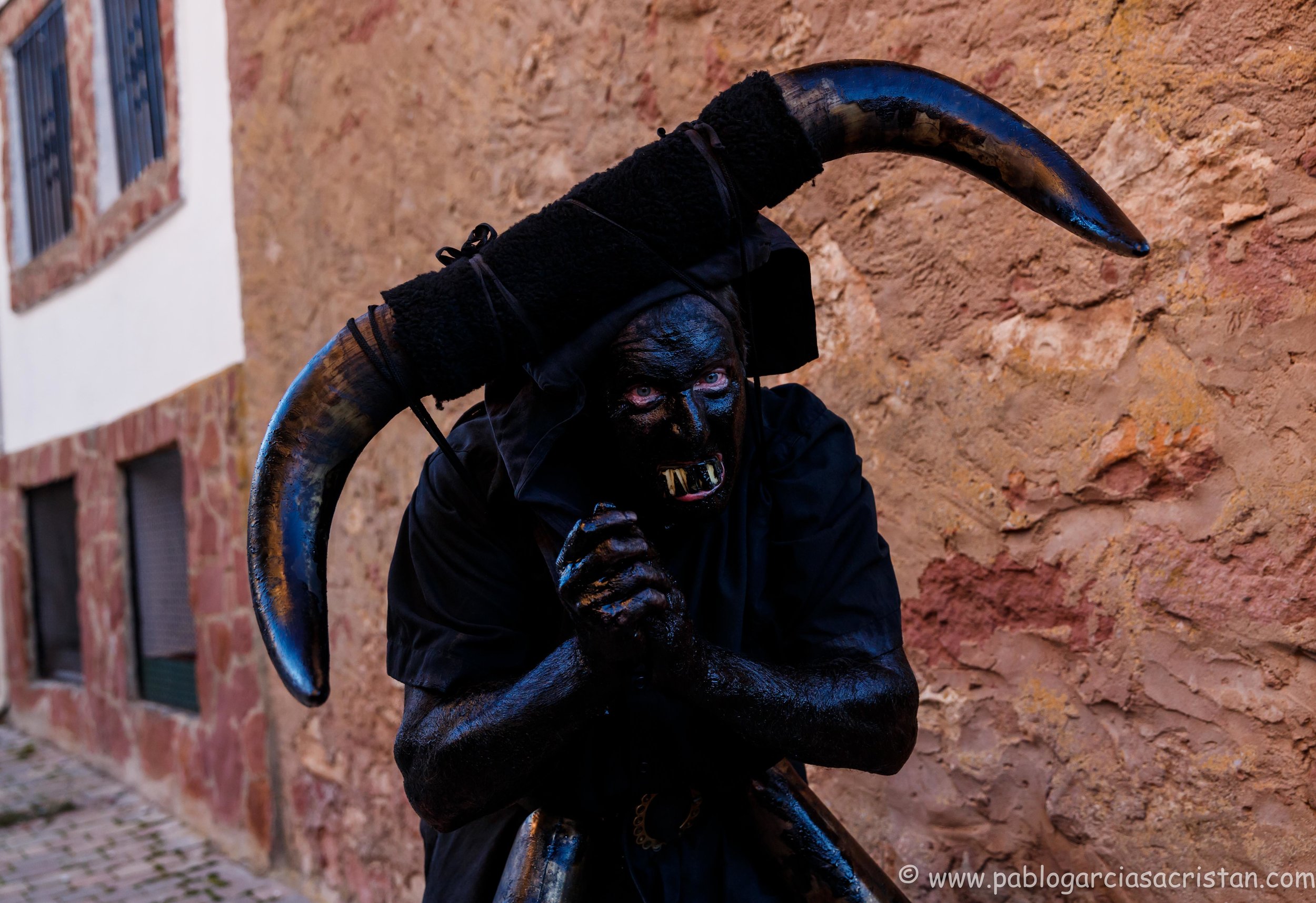

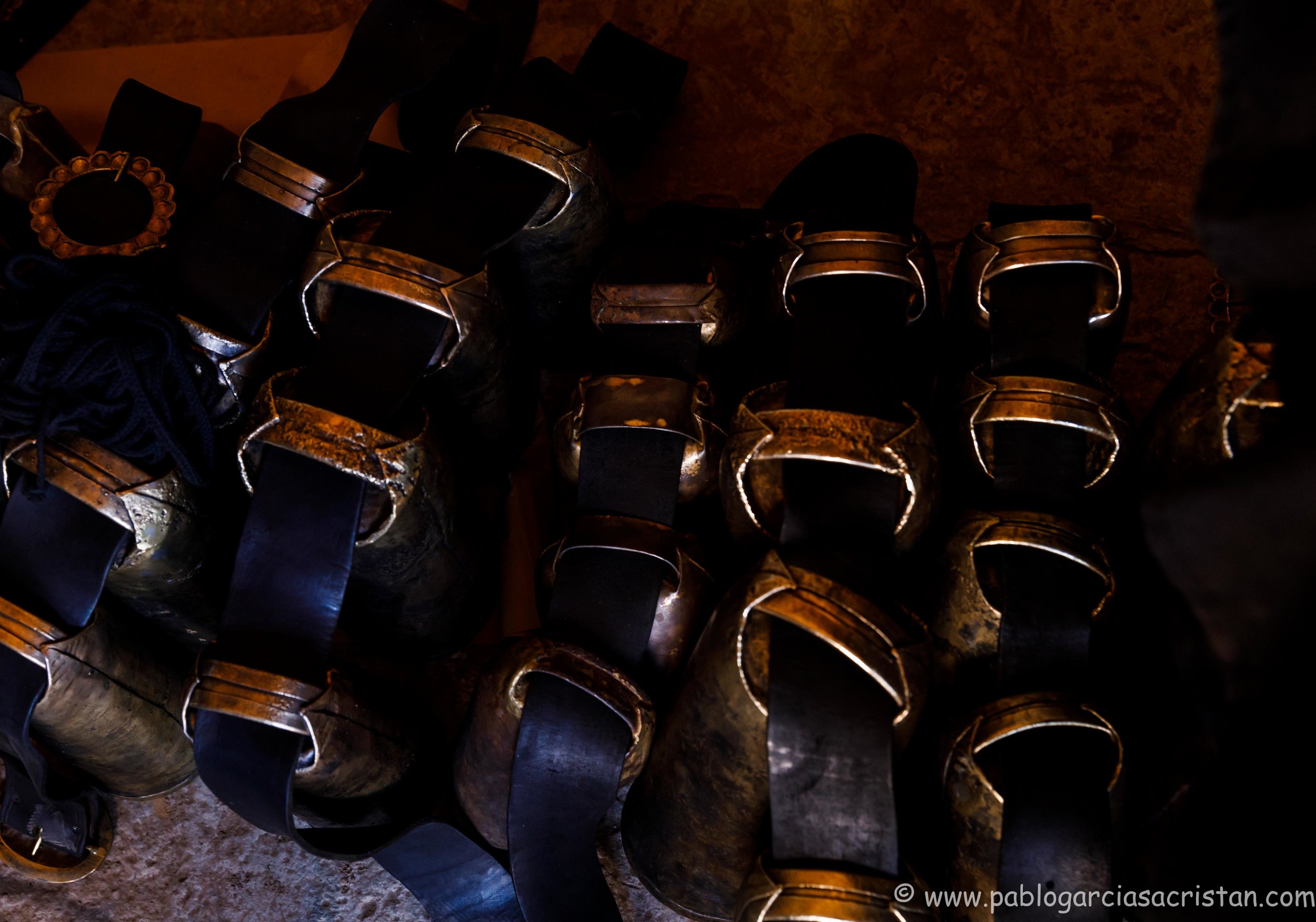
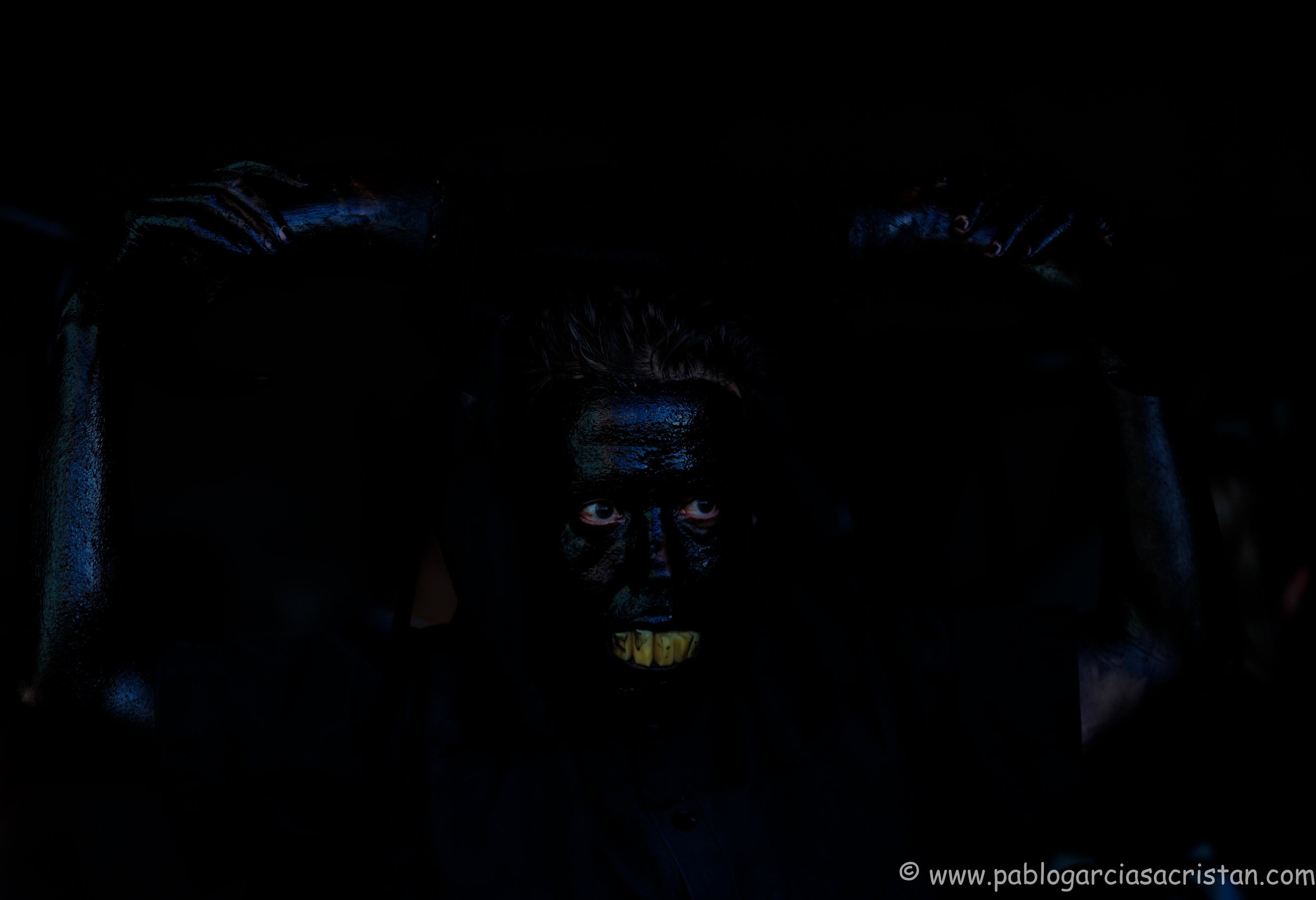
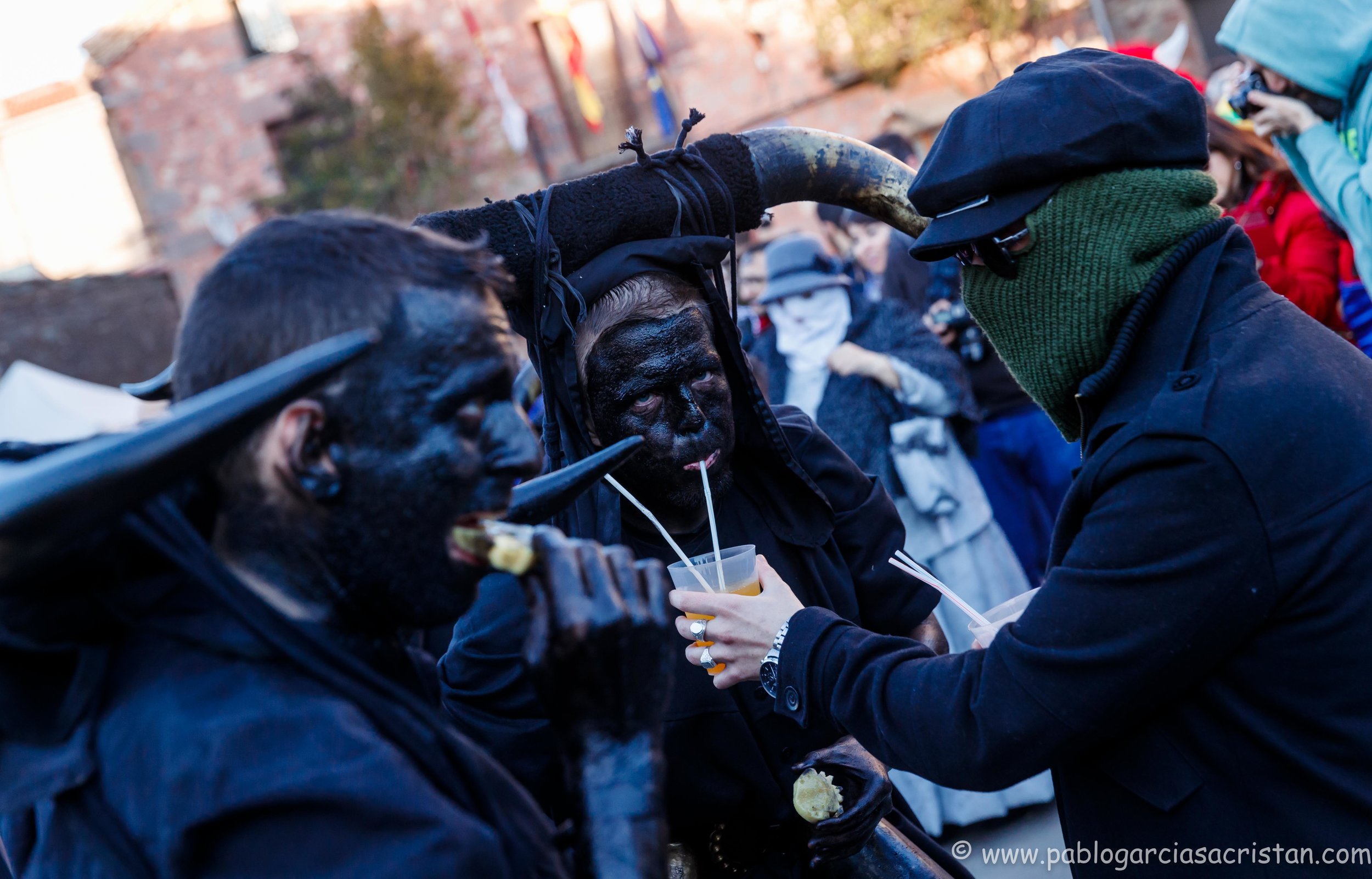

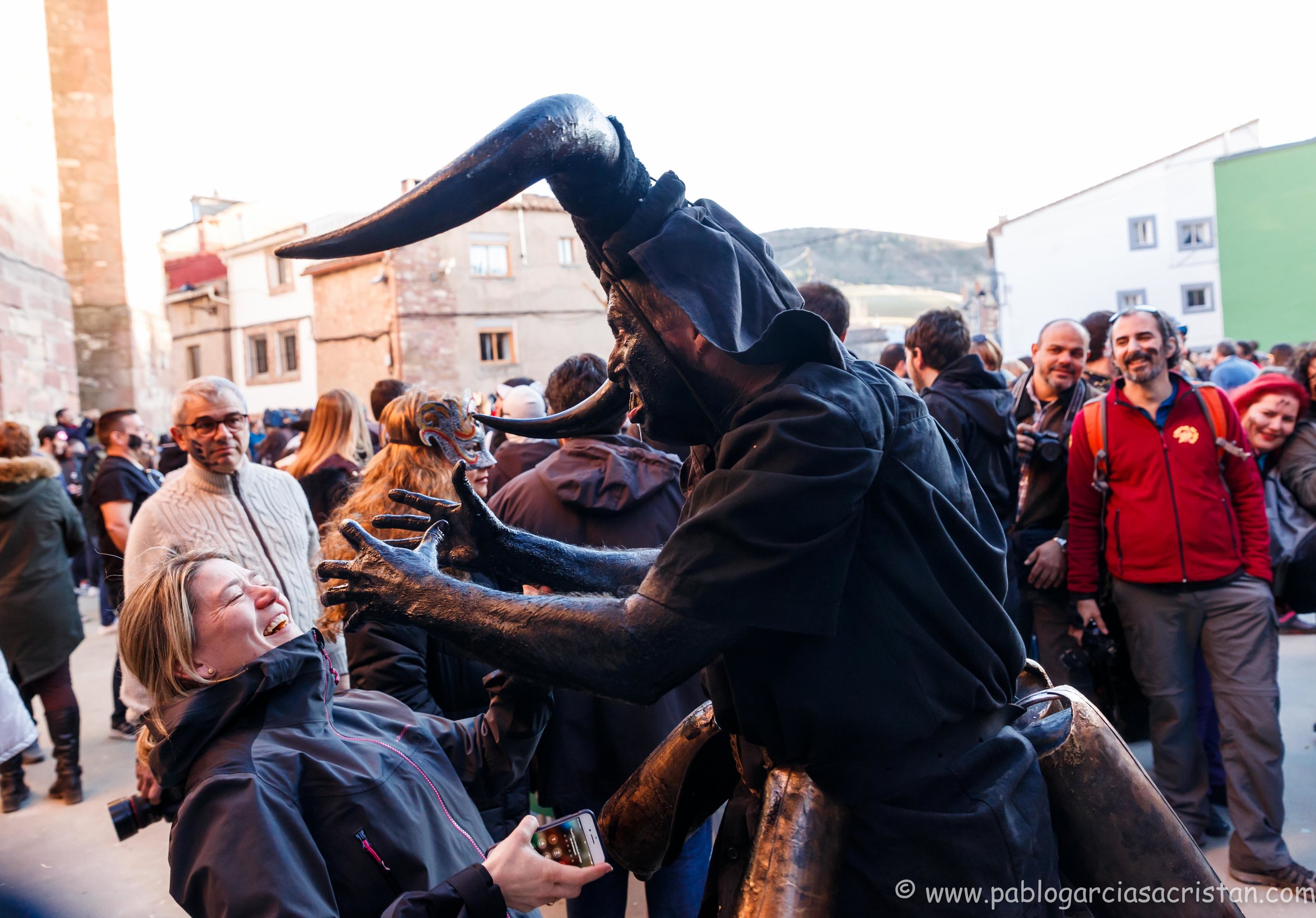
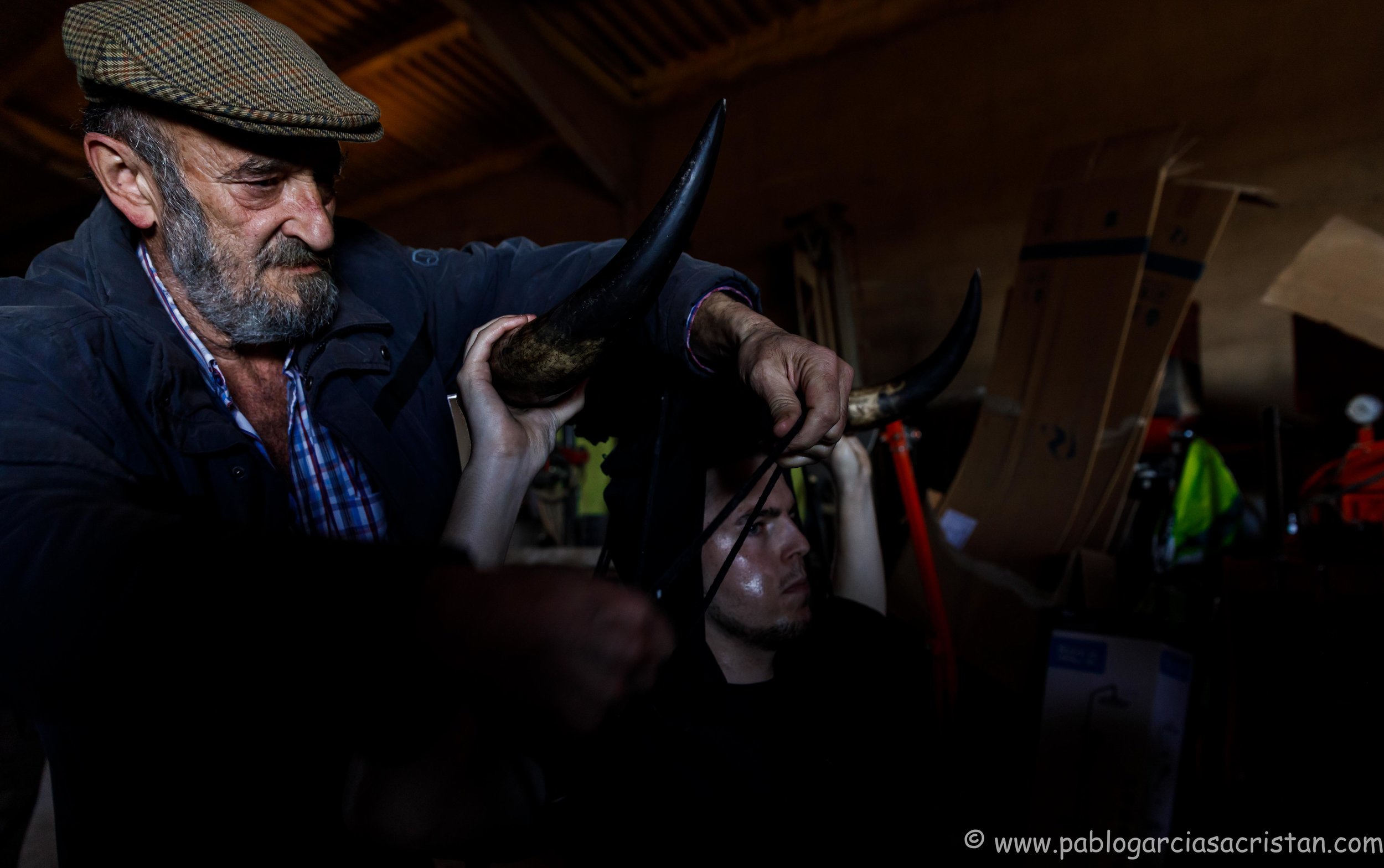
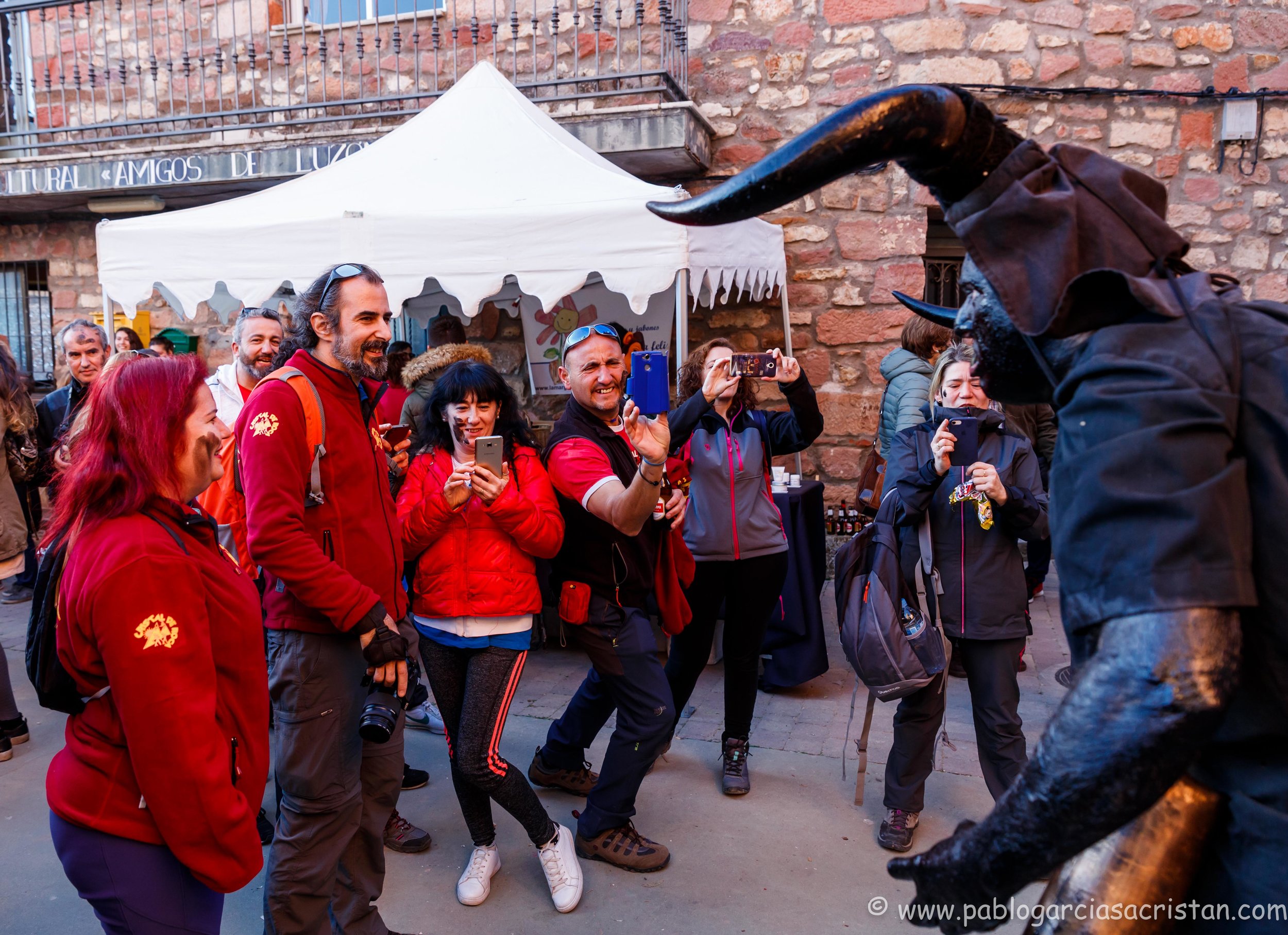
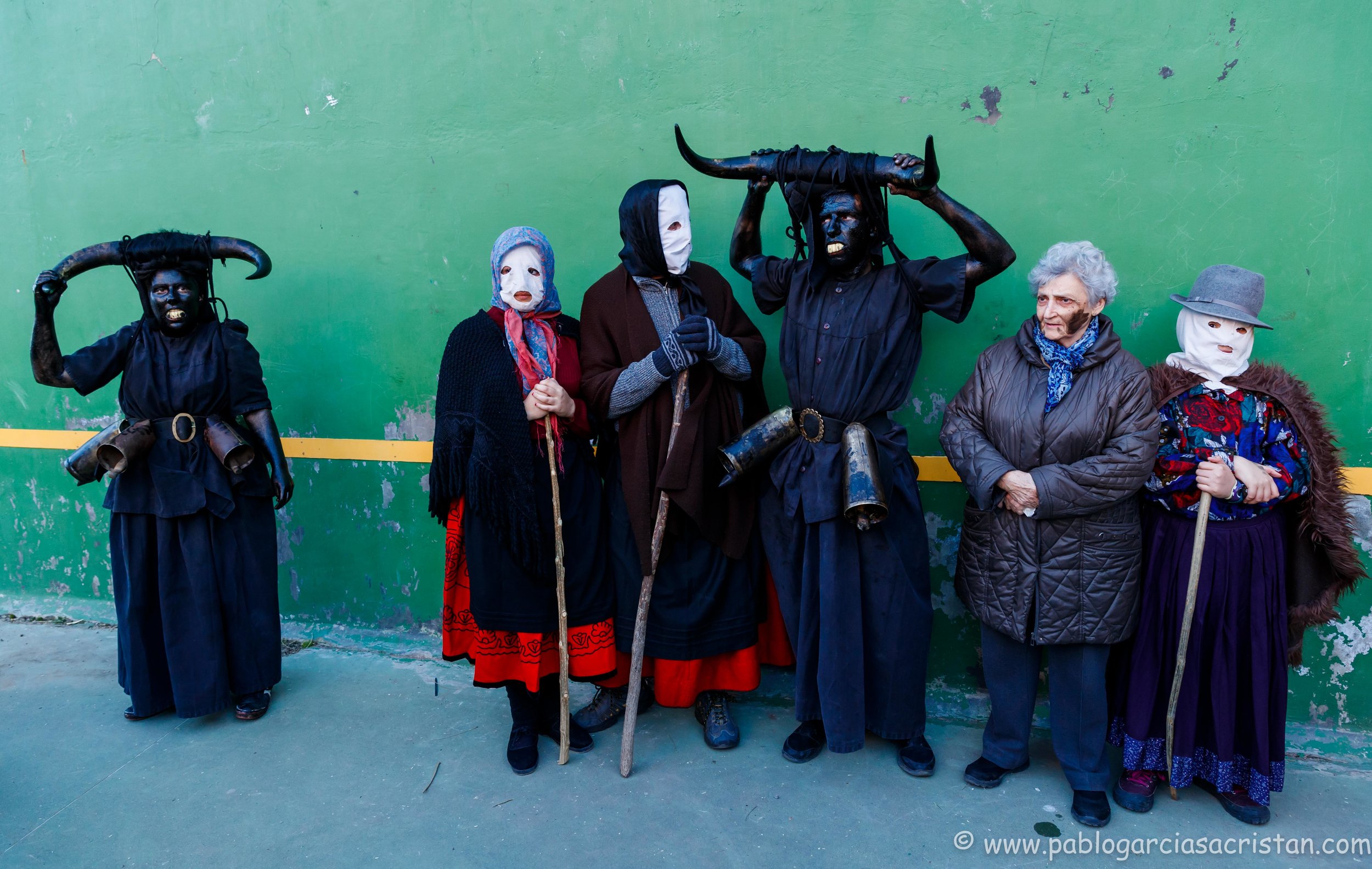
LOS DIABLOS DE LUZÓN
Los diablos persiguen a sus víctimas para tiznar de hollín a todo aquel que no vaya disfrazado.
Según cuenta la leyenda, una vez al año unas criaturas abandonan la madre Tierra a través de una grieta que nadie conoce. El estallido de los cencerros anuncia la llegada de estos seres ancestrales: los diablos de Luzón.
Los diablos hacen su aparición en este pequeño pueblo de Guadalajara (España) al caer la tarde y persiguen a sus víctimas para tiznar de hollín a todo aquel que se cruce en su camino y que no lleve la cara cubierta, como ocurre con las famosas ‘mascaritas’.
Sus figuras se caracterizan por su vestimenta totalmente negra, por sostener unos enormes cuernos de toro encima de la cabeza, por llevar grandes cencerros y por impregnar su cara y sus brazos con una mezcla de hollín y aceite, que les da ese color negro inconfundible.
El origen de esta fiesta se remonta al asentamiento de los ‘Lusones’, que poblaron esa parte de la ribera del Tajuña, y se ha transmitido de generación en generación. La tradición se perdió a finales de los años 60, pero volvió a recuperarse en 1992 y cada año cuenta con más participación. A día de hoy, esta manifestación cultural que está declarada como Bien de Interés Turístico Regional y Fiesta de Interés Turístico Provincial.
THE DEVILS OF LUZÓN
The devils chase their victims to smudge with soot to everyone who is not disguised.
According to legend, once a year creatures leave Mother Earth through a crack that nobody has ever seen. The outbreak of cowbells announces the arrival of these ancestral beings: the devils of Luzon.
At the sunset, the devils appear in this small town of Guadalajara province (Spain) and chase their victims to smudge soot to anyone who crosses their path with the face uncovered. That is the reason why the famous “mascaritas” (masks) avoid showing their face by covering it with a white cloth.
Their figures are characterized by their totally black clothing, holding huge bull horns on their heads, wearing large cowbells and impregnating their face and arms with a mixture of soot and oil, which gives them that unmistakable black color.
The origin of the parade goes back to the the 'Lusones' settlement, who populated this part of the Tajuña riverbank, and transmitted it from generation to generation. At the end of 60s, the tradition was lost. However, it was recovered in 1992 becoming more famous and popular each year. Today, this cultural event is declared as an asset of Regional Tourist´s Interest and Festival of Provincial Tourist´s Interest.
Texto Carla Sobrino
Fotos Pablo García
Luzón. Marzo 2019
